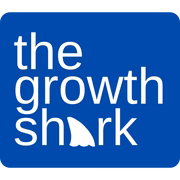Why do you need to build a brand?
You’ve got a logo and design that makes your company easy to identify.
Is that enough?
Building a brand is creating an identity that gives your company personality. You can connect with people through your brand story.
What Is Branding?

Brand building doesn’t have to be all business.
You can practice building a brand by giving your customers a glimpse into your personal life.
Your brand development can include sharing your brand story and all that you experienced to get where you are today.
What Does Branding Mean in Business?
When you think about strategic branding, an essential question to ask is, what problem does your brand solve?
What conversation do customers have about your product or service that leads them to search for a solution?
Entrepreneur.com describes, “Strong branding creates customer beliefs and expectations. It includes your story, its value proposition and its mission.
While the product name or logo is important, they are not the brand itself: they are simply helping potential customers identify you and distinguish you from competitors.”
Brand development goes beyond setting up your business design. It extends into building a brand that will create a community.
What Are the Benefits of Branding?
Strategic branding creates a personal relationship with your customers worth fostering.
For example, if you have a passion, weave it into your brand building. Raise awareness for violence against women by donating a percentage of your proceeds to women's shelters.
Then when your audience thinks of your brand, they will identify your company with a passion for supporting women.
What Is Branding in Marketing?
Building a brand creates a catalyst for marketing ideas.
If you have a brand centered around self-care and empowerment, you can use the messaging in your marketing content to reach your target audience.
Examples of Branding
Nike uses strength and fitness as its branding strategy, making the consumer feel like they can run further and lift heavier when they put on a Nike shoe or tank top.
Cheerios uses strategic branding to help parents feel guilt-free when they sit their kids down with a heart-healthy and easy breakfast each morning.
What Is a Branding Strategy and Why Does It Matter?

Building a brand comes naturally when you start and end with the customer in mind.
What was your passion for starting the business, and how do you think customers can relate?
Business Insider advises, “Ultimately, the goal is to choose a branding strategy that matches your brand to better reach your customers and communicate with them on a meaningful level. Align your branding strategy with your brand personality, and you'll create a plan that will help you to reach each and every goal.”
Use your passion for branding inspiration. Did you create your product to provide convenience? Emphasize that message.
What Does It Mean to Build a Brand?
Brand building includes advertising campaigns to get your brand identity out there.
Brand inspiration starts with creating a connection between your company and your target audience.
Consistency is vital. And little by little, you will watch your brand grow.
The Steps of Branding
- Define Your Customers: Market to your audience. Are you marketing to Millennials and Gen Zs? How broad is the audience? Can you reach all demographics?
- Share Your Passion: Your “why” will ultimately translate into your company identity.
- Choose Your Style: What is your brand voice? Do you want to be casual and connective with your customers? Or do you want to offer a mysterious, elusive communication style?
- Market Your Brand: Once you’ve established your branding, it’s time to shout it from the rooftops.
The Key Elements of a Brand
Branding inspiration comes from finding your brand voice and reaching out for connection.
Key elements of a brand include values, identity, and a promise to your customers.
What Makes a Brand Successful
Building a brand requires a relationship of trust between your company and the target audience.
Create a community within your brand. Can they trust that your product or service is worth the money? Do they have a way to access customer reviews and experiences?
What Makes a Brand Exciting
The truth is that a consumer wants the best bang for their buck.
And when you make your brand different from any other product on the market, that will create enough excitement to draw interest.
How to Start Building a Brand

Are you ready to get started on building a brand?
We can spark some ideas to get your wheels turning.
Think About What Describes a Company’s Brand
Building a brand requires strategy.
What do you want customers to feel when they use your product?
Share personal stories of what motivated you to bring the product or service into their lives.
Forbes points out, “What the one thing is that you do better than your competition? The thing that truly sets you apart from others in your niche?
If you can’t immediately come up with a clear, concise and compelling answer, you’ve got work to do.”
Keep it simple and memorable. Remember Cheerios. Heart-healthy immediately comes to mind.
Start with Brand Research
A wealth of information is out there for you to learn more about your brand:
- Customer reviews
- Competitor websites
- Social media conversations
- Market research
What can you find out about the industry, and where does your company fit in?
Ask Yourself: How Would You Describe Your Brand in Three Words?
It will vary for every company.
What are the three words that describe your brand?
Start with your “why” and go from there.
Why Does it Help a Brand to Focus on Only Three Words?
When your message is concise, your audience will remember you more.
Think Disney and the words magical, adventure, and happiness comes to mind.
Joyride Coffee is delicious, high-quality, and sustainable.
Talking about The Growth Shark, storytelling, forward-thinking, and cause-driven highlight our brand.
What describes your brand?
How Do You Build a Successful Brand?
Even though you only have to come up with three words, it’s not something to rush.
Search for brand inspiration by listening and understanding your audience. You may even find success in pivoting along the way.
So you’ve developed your brand identity. Now what? Learn how to cater to your audience by speaking directly to their needs and priorities.
















